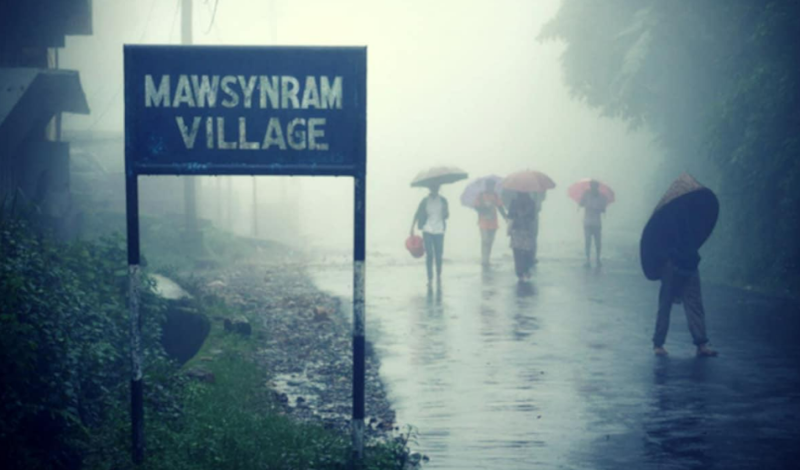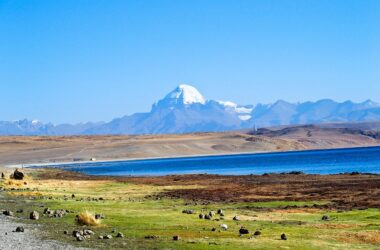When it comes to rainfall, few places in the world can compare to the extraordinary phenomenon that is Mawsynram. Located in the state of Meghalaya in northeastern India, Mawsynram holds the prestigious title of being the wettest place on Earth. This captivating destination boasts not only a stunning landscape but also a unique and vibrant culture that draws visitors from far and wide. In this article, we will delve into the mesmerizing aspects of Mawsynram, from its remarkable rainfall to its natural beauty and cultural heritage.
Table of Contents
- The Rainfall Capital of the World
- The Enchanting Landscape of Mawsynram
- Flora and Fauna: A Biodiversity Hotspot
- The Living Bridges of Meghalaya
- Mawsynram’s Cultural Tapestry
- Exploring Local Cuisine
- Thriving Festivals in Mawsynram
- Adventure and Ecotourism Opportunities
- Sustainable Practices in Mawsynram
- The Influence of Rain in Daily Life
- Local Legends and Folklore
- Accommodation and Tourism Facilities
- Best Time to Visit Mawsynram
- Transportation Options
- Conclusion
1. The Rainfall Capital of the World
Mawsynram’s claim to fame lies in its extraordinary rainfall statistics. The region experiences an astonishing annual average rainfall of around 11,871 millimeters (467.4 inches). This unparalleled amount of precipitation has earned Mawsynram the prestigious title of the wettest place on Earth, surpassing even its neighboring village, Cherrapunji.
2. The Enchanting Landscape of Mawsynram
Nestled amidst the picturesque Khasi Hills, Mawsynram offers a breathtaking landscape that captivates every visitor. Lush green valleys, cascading waterfalls, and rolling hills covered in mist create a mystical ambiance. The Meghalayan plateau, with its unique rock formations, further adds to the region’s scenic charm.
3. Flora and Fauna: A Biodiversity Hotspot
Mawsynram is not only known for its rainfall but also for its remarkable biodiversity. The region is a hotspot for numerous plant and animal species, including rare orchids, pitcher plants, and various endemic species of birds. Exploring the verdant forests and discovering the rich flora and fauna is a delight for nature enthusiasts.
4. The Living Bridges of Meghalaya
One of the most fascinating aspects of Mawsynram and its neighboring regions is the living root bridges. These incredible structures are formed by training the roots of the Ficus elastica tree to interweave and create natural bridges over rivers and streams. The living bridges, some of which are over a hundred feet long, are a testament to the harmonious relationship between humans and nature.
5. Mawsynram’s Cultural Tapestry
Apart from its natural wonders, Mawsynram is also renowned for its diverse and vibrant culture. The region is predominantly inhabited by the Khasi tribe, who have a rich heritage and distinct traditions. Visitors can immerse themselves in the local way of life by interacting with the friendly locals, participating in traditional ceremonies, and exploring the colorful markets.
6. Exploring Local Cuisine
The culinary scene in Mawsynram offers a delectable array of flavors. Traditional Khasi dishes such as Jadoh (a meat and rice delicacy), Nakham Bitchi (fermented soybean chutney), and Pumaloi (a sweet rice dish) tantalize the taste buds with their unique blend of spices and fresh ingredients. Exploring the local cuisine is a must for food enthusiasts visiting the region.
7. Thriving Festivals in Mawsynram
Mawsynram is a place of celebration, with numerous festivals held throughout the year. The Khasi tribe celebrates harvest festivals like Shad Suk Mynsiem and Behdienkhlam with great enthusiasm. These vibrant festivals are an excellent opportunity for visitors to witness traditional music, dance performances, and cultural ceremonies.
8. Adventure and Ecotourism Opportunities
For adventure seekers and nature lovers, Mawsynram offers a plethora of opportunities. Trekking through the verdant hills, exploring caves like Krem Mawmluh, and embarking on thrilling water-based activities in the region’s numerous waterfalls and rivers are just a few examples. The region’s commitment to ecotourism ensures that these activities are carried out in an environmentally sustainable manner.
9. Sustainable Practices in Mawsynram
Given the abundance of rainfall, Mawsynram has embraced sustainable practices to harness and utilize this precious resource. Rainwater harvesting techniques, as well as the construction of traditional water reservoirs known as “khels,” help the locals manage and conserve water effectively. These sustainable practices serve as an inspiration for environmental enthusiasts around the world.
10. The Influence of Rain on Daily Life
In Mawsynram, rain is not just a weather event but a way of life. The locals have adapted to the constant presence of rain in their daily routines. From unique architectural features that protect homes from heavy rainfall to traditional umbrellas and rain gear, the influence of rain can be seen in various aspects of Mawsynram’s culture.
11. Local Legends and Folklore
Mawsynram is steeped in intriguing local legends and folklore. One such legend revolves around the deity “U Mawbynna,” who is believed to control the rain in the region. These stories passed down through generations, add an enchanting element to the overall mystique of Mawsynram.
12. Accommodation and Tourism Facilities
While Mawsynram is not as heavily developed as some tourist destinations, there are a variety of accommodation options available to cater to different budgets and preferences. From cozy homestays and guesthouses to eco-resorts, visitors can find a comfortable place to stay while immersing themselves in the beauty of the surroundings.
13. Best Time to Visit Mawsynram
The best time to visit this place is during the monsoon season, which typically lasts from June to September. This period offers a firsthand experience of the region’s awe-inspiring rainfall. However, it is essential to check weather conditions and road accessibility before planning a trip, as heavy rains can sometimes cause temporary disruptions.
14. Transportation Options
To reach this place, visitors can fly to Shillong Airport, which is the nearest airport to the region. From there, they can hire a taxi or take a bus to reach Mawsynram. It is recommended to hire a local guide or driver who is familiar with the area to navigate the hilly terrain and make the most of the visit.
Conclusion
Mawsynram, the wettest place on Earth, offers a truly remarkable experience for nature enthusiasts and adventure seekers. With its unparalleled rainfall, captivating landscape, rich cultural heritage, and sustainable practices, Mawsynram is a destination that leaves a lasting impression. Exploring this unique corner of the world provides an opportunity to witness the harmonious coexistence of humans and nature.
Similar Articles
FAQs
Is it safe to visit Mawsynram during the monsoon season?
While visiting Mawsynram during the monsoon season can be a captivating experience, it is important to stay updated on weather conditions and follow local guidelines to ensure safety.
Can I witness the living root bridges in Mawsynram?
While Mawsynram itself does not have living root bridges, neighboring areas like Cherrapunji are famous for these natural wonders.
What are some recommended trekking routes in Mawsynram?
The David Scott Trail and the Double Decker Living Root Bridge trek are popular options for trekkers in the region.
Are there any specific customs or traditions to be aware of when visiting Mawsynram?
It is advisable to respect local customs and traditions, such as seeking permission before taking photographs of people or participating in cultural ceremonies.
How can I contribute to the sustainability efforts in Mawsynram?
Visitors can support sustainable tourism practices by conserving water, minimizing waste generation, and supporting local initiatives focused on environmental preservation.









